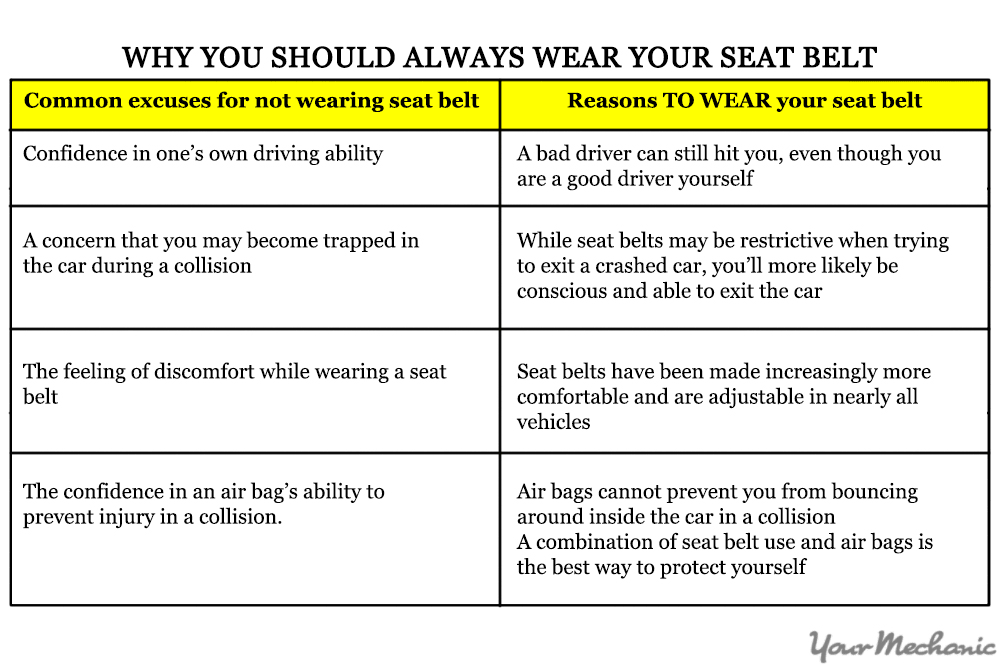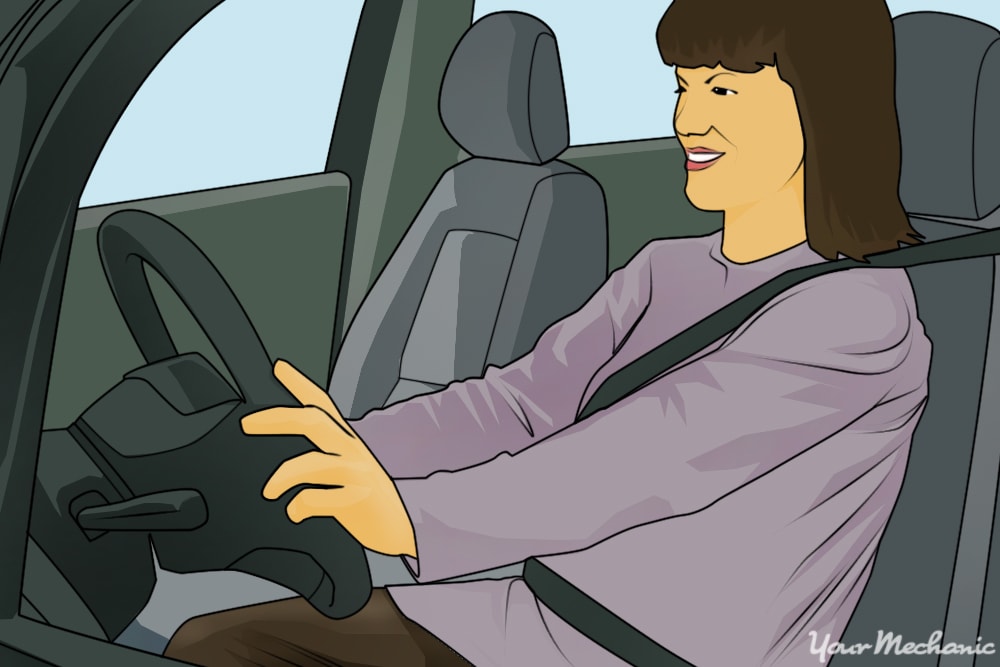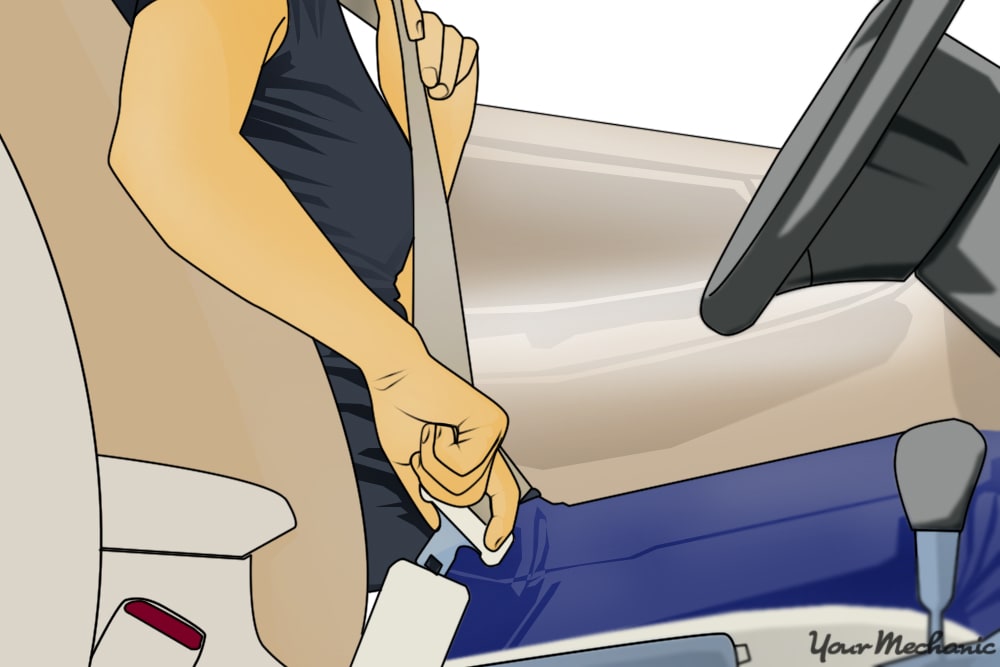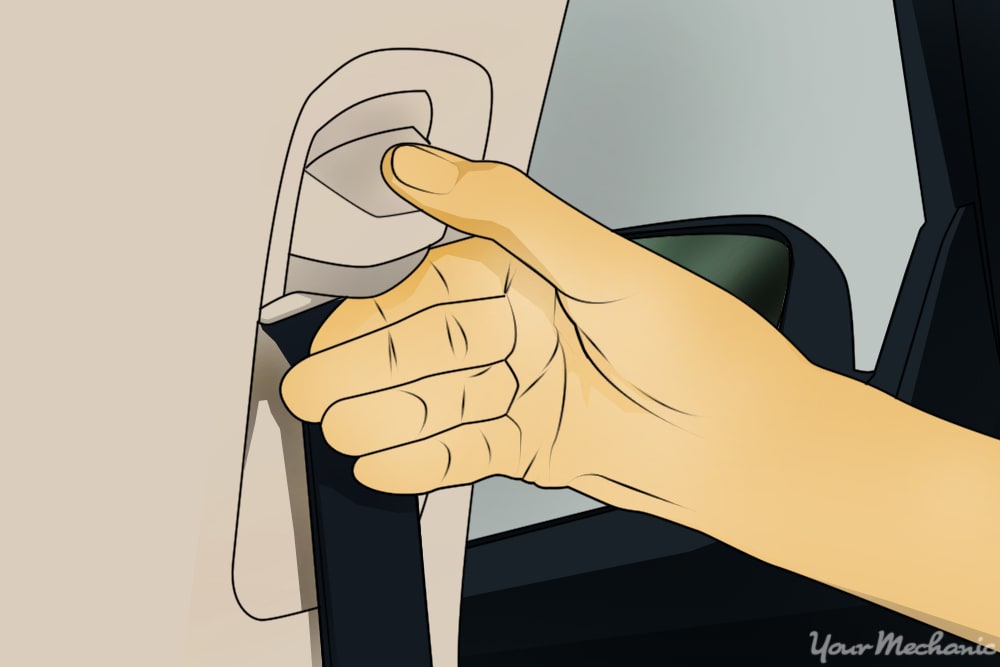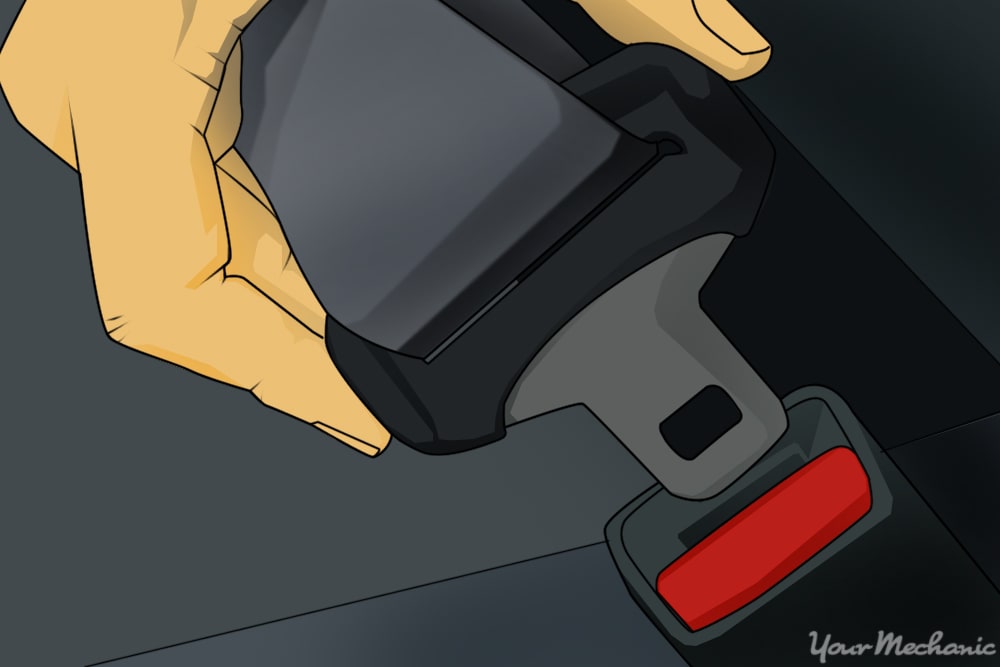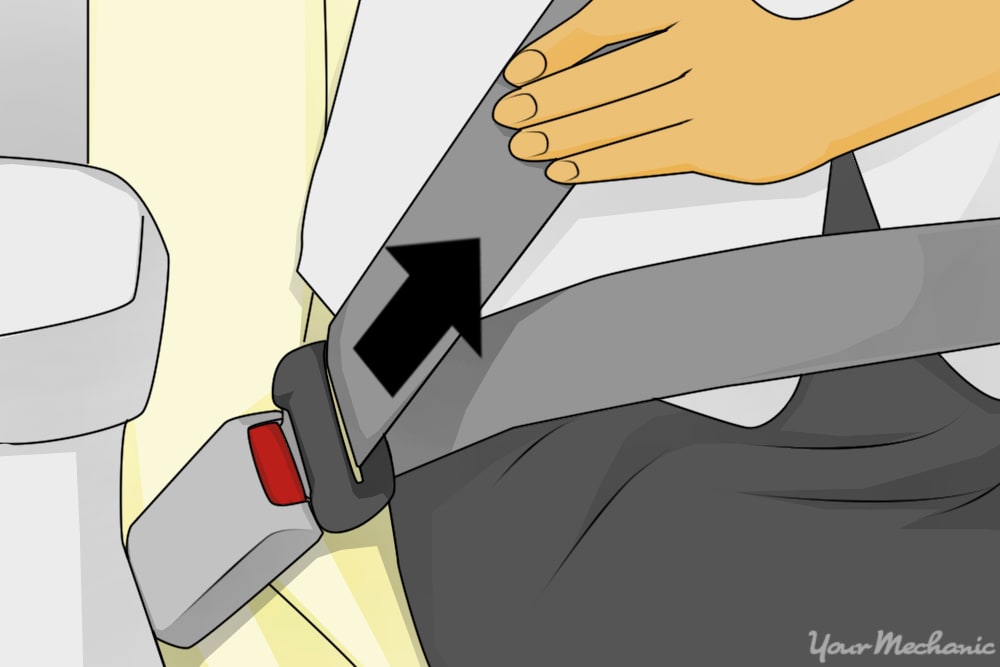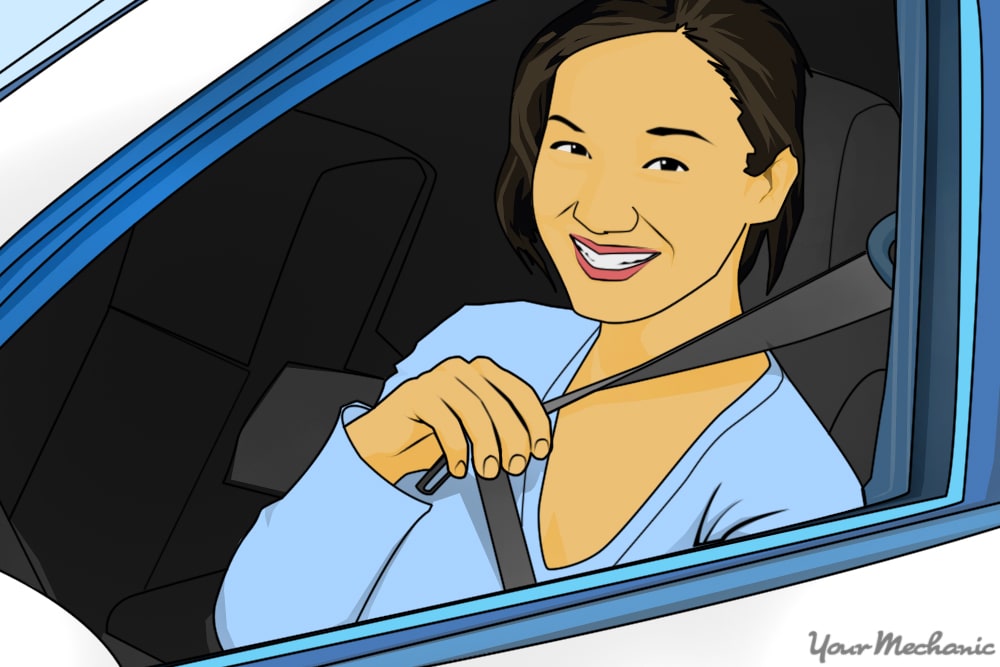

For people aged 3 through 34, the leading cause of death in the US is car crashes. The number of deaths related to car accidents in the US have declined since the 1960s, largely due to the implementation and use of seat belts and other safety devices. However, more than 32,000 people die per year and approximately half of those deaths could have been prevented with the proper use of a seat belt.
Seat belts were installed in some Ford models as early as 1955 and soon after they become commonplace in vehicles. While there is overwhelming proof that proper use of a seat belt can save lives in a collision, many people choose either to wear their seat belt improperly or to not use it at all. Reasons given for not wearing a seat belt and their counter arguments can be seen in the table below:
Regardless of the circumstance, using your seat belt every time you are in a vehicle, whether as a passenger or as the driver, is a mandatory practice. Proper use will enhance your protection in the unfortunate event of a collision.
Method 1 of 2: Wear a shoulder harness properly
In a vast majority of vehicles, the trend is for manufacturers to install shoulder harness belts in every possible position. The driver, the front passenger, and nearly every rear-seat passenger should have shoulder belts in vehicles manufactured within the past decade. While middle-seat passengers may still have only lap belts, it is overwhelmingly commonplace for shoulder belt to be installed for the driver and passengers.
Step 1: Position yourself properly. Sit with your back against the seat back and your hips all the way back in the seat.
If you are not sitting upright all the way to the back of your seat you can get more slack in the belt than should be present which can cause serious injuries in an accident.
Step 2: Pull the shoulder strap across your body. With your hand closest to the seat belt, reach up by your shoulder and grasp the seat belt at the metal latch.
Pull it across your body towards your hip on the opposite side as the arm you are using.
The seat belt buckle is located at that opposite hip.
- Tip: Ensure the seat belt webbing is not twisted for the most comfortable wear.
Step 3: Locate the seat belt buckle with your other hand. Grasp the buckle and make sure the slotted top end is pointed upwards with the release button on the side away from you.
- Tip: In the event of a collision or even just for an easy release when you are exiting the vehicle, it’s important that the seat belt buckle button is on the outside part of the seat belt buckle or it can be difficult to access and release.
Step 4: Insert the seat belt. Line up the seat belt latch on the belt webbing with the slot in the top of the buckle and insert it fully.
You should hear a click when the buckle fully engages and locks onto the seat belt latch.
Step 5: Make sure you are fully secured. Pull on the seat belt at the buckle to make sure it is fully secured.
Step 6: Adjust the shoulder belt to your body. Adjust the seat belt every time you wear your seat belt to make sure it fits you well.
The ideal placement for the shoulder belt is to have it cross your body at your collarbone.
Adjust the seat belt height on the pillar if there is an adjustment in your vehicle.
Alternatively, if you have a seat height adjustment, you can raise or lower the seat height to compensate for the seat belt location on your shoulder.
Step 7: Tighten the belt at the hips. Make sure the lap portion of the belt is low on your hips and snug.
If the lap belt is loose, you can “submarine” under the belt in an accident, causing injury that would not occur if the belt is snug.
Method 2 of 2: Wear a lap belt properly
Whether you have a shoulder belt or just a lap belt, it is critical that it is worn properly to avoid injuries in a collision.
Step 1: Sit upright. Sit upright with your hips all the way back in the seat.
Step 2: Lay the lap belt across your hips. Cross the seat belt across your hips and line the belt up with the buckle.
Step 3: Insert the seat belt in the buckle. Hold the seat belt buckle in one hand, then press the latch on the belt webbing into the buckle.
Make sure the button on the buckle is on the side of the buckle away from you.
Step 4: Adjust the lap belt snugly. Adjust the lap belt so that you it fits snugly on your waist and the slack in the belt is removed.
Position the belt low on your hips, then pull the loose end of the lap belt away from the buckle to adjust it tighter.
Pull until there is no looseness in the belt, but not until it is causing an indent in your body.
Seat belts are devices that has been proven to save lives. For your own safety and the safety of your passengers, you should enforce a rule in your vehicle that every occupant wears their seat belt at all times.


